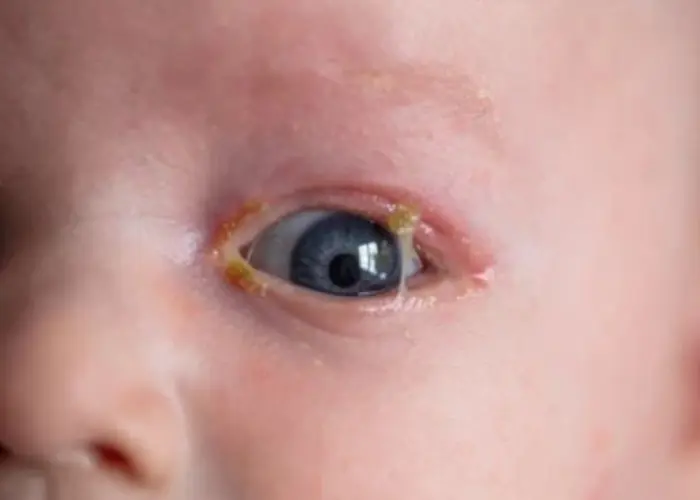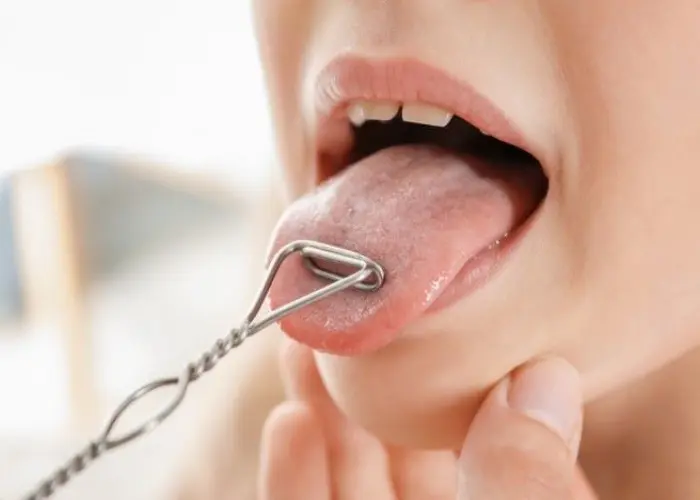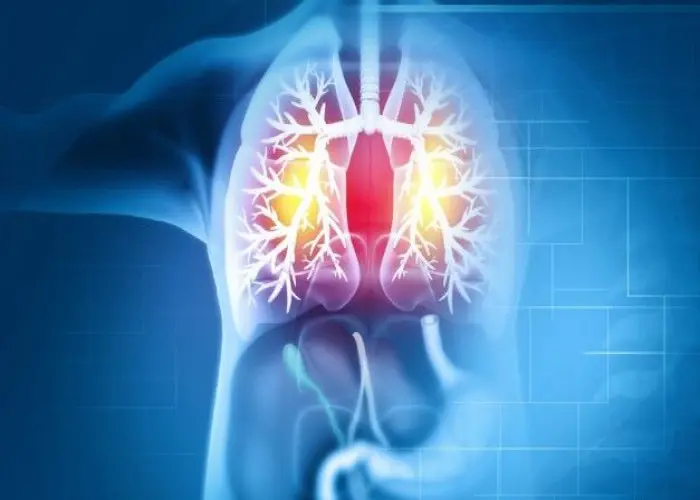 Welcome
Welcome
“May all be happy, may all be healed, may all be at peace and may no one ever suffer."
Blocked tear duct

A blocked tear duct is a condition in which tears cannot drain properly from the eye. This can cause the tears to overflow onto the face, and it may also lead to other symptoms such as redness, swelling, or discharge from the eye. Blocked tear ducts can be caused by a variety of factors, including infection, injury, or congenital abnormalities. Treatment options may include gentle massage of the tear ducts to encourage drainage, warm compresses, antibiotics to treat any underlying infection, or surgery to open or bypass the blocked duct. In some cases, blocked tear ducts may resolve on their own without treatment. It is important to work closely with a healthcare professional to manage blocked tear ducts and prevent potential complications, such as recurrent infections or vision problems.
Research Papers
Disease Signs and Symptoms
- Watery eyes
- Red eyes (conjunctivitis)
- Pink eye (conjunctivitis)
- Crusted eyelashes
- Blurred vision of eye
- Recurrent eye infection or inflammation (pink eye)
- Painful swelling near the inside corner of the eye
- Mucus or pus discharge from the lids and surface of the eye
Disease Causes
Blocked tear duct
Blocked tear ducts can happen at any age, from birth to adulthood. Causes include:
- Congenital blockage. Many infants are born with a blocked tear duct. The tear drainage system may not be fully developed or there may be a duct abnormality. Often a thin tissue membrane remains over the opening that empties into the nose (nasolacrimal duct).
- Age-related changes. As you age, the tiny openings that drain tears (puncta) may get narrower, causing blockage.
- Infection or inflammation. Chronic infection or inflammation of your eyes, tear drainage system or nose can cause your tear ducts to become blocked.
- Injury or trauma. An injury to your face can cause bone damage or scarring near the drainage system, disrupting the normal flow of tears through the ducts. Even small particles of dirt or loose skin cells lodged in the duct can cause blockage.
- Tumor. A tumor in the nose or anywhere along the tear drainage system can cause blockage.
- Eyedrops. Rarely, long-term use of certain medications, such as eyedrops used to treat glaucoma, can cause a blocked tear duct.
- Cancer treatments. A blocked tear duct is a possible side effect of chemotherapy medication and radiation treatment for cancer.
How the tear drainage system works
The lacrimal glands produce most of your tears. These glands are located inside the upper lids above each eye. Normally, tears flow from the lacrimal glands over the surface of your eye. Tears drain into openings (puncta) on the inside corners of your upper and lower eyelids.
The puncta lead to small canals (canaliculi) that move tears to a sac to a reservoir on the side of the nose (lacrimal sac). From there tears travel down a duct (the nasolacrimal duct) and drain into your nose. Once in the nose, tears are reabsorbed.
A blockage can occur at any point in the tear drainage system, from the puncta to your nose. When that happens, your tears don't drain properly, giving you watery eyes and increasing your risk of eye infections and inflammation.
Disease Prevents
Blocked tear duct
To reduce your risk of developing a blocked tear duct later in life, get prompt treatment of eye inflammation or infections. Follow these tips to avoid eye infections in the first place:
- Wash your hands thoroughly and often.
- Try not to rub your eyes.
- Replace your eyeliner and mascara regularly. Never share these cosmetics with others.
- If you wear contact lenses, keep them clean according to recommendations provided by the manufacturer and your eye care specialist.
Disease Treatments
Your treatment depends on what's causing the blocked tear duct. You may need more than one approach to correct the problem. If a tumor is causing your blocked tear duct, treatment will focus on the cause of the tumor. Surgery may be performed to remove the tumor, or your doctor may recommend using other treatments to shrink it.
- Medications to fight infection. If your doctor suspects that an infection is present, he or she may prescribe antibiotic eyedrops or pills.
- Watch-and-wait or massage. Babies born with a blocked tear duct often get better without any treatment. This can happen as the drainage system matures during the first few months of life. Often a thin tissue membrane remains over the opening that empties into the nose (nasolacrimal duct). If your baby's blocked tear duct isn't improving, his or her doctor may teach you a special massage technique to help open the membrane.
- If you've had a facial injury that caused blocked tear ducts, your doctor may suggest waiting a few months to see if the condition improves as your injury heals. As the swelling goes down, your tear ducts may become unblocked on their own.
- Dilation, probing and flushing. For infants, this technique is done under general anesthesia. The doctor enlarges the punctal openings with a special dilation instrument and inserts a thin probe through the puncta and into the tear drainage system.
- For adults with partially narrowed puncta, your doctor may dilate the puncta with a small probe and then flush (irrigate) the tear duct. This is a simple outpatient procedure that often provides at least temporary relief.
- Stenting or intubation. This procedure is usually done using general anesthesia. A thin tube, made of silicone or polyurethane, is threaded through one or both puncta in the corner of your eyelid. These tubes then pass through the tear drainage system into your nose. A small loop of tubing will stay visible in the corner of your eye, and the tubes are generally left in for about three months before they're removed. Possible complications include inflammation from the presence of the tube.
- Balloon catheter dilation. If other treatments haven't worked or the blockage returns, this procedure may be used. It's usually effective for infants and toddlers and may also be used in adults with partial blockage. First the patient is given a general anesthetic. Then the doctor threads through the tear duct blockage in the nose a tube (catheter) with a deflated balloon on the tip. He or she inflates and deflates the balloon a few times to open the blockage.
Surgery
The surgery that's commonly used to treat blocked tear ducts is called dacryocystorhinostomy (DAK-ree-oh-sis-toe-rye-nohs-tuh-me). This procedure opens the passageway for tears to drain out your nose again. You'll be given a general anesthetic, or a local anesthetic if it's performed as an outpatient procedure.
The steps in this procedure vary, depending on the exact location and extent of your blockage, as well as your surgeon's experience and preferences.
- External. With external dacryocystorhinostomy, your surgeon makes an incision on the side of your nose, close to the lacrimal sac. After connecting the lacrimal sac to your nasal cavity and placing a stent in the new passageway, the surgeon closes up the skin incision with a few stitches.
- Endoscopic or endonasal. With this method, your surgeon uses a microscopic camera and other tiny instruments inserted through the nasal opening to your duct system. This method requires no incision so leaves no scar. But the success rates aren't as high as with the external procedure.
Following surgery you'll use a nasal decongestant spray and eyedrops to prevent infection and reduce inflammation. After six to 12 weeks, you'll return to your doctor's office for removal of any stents used to keep the new channel open during the healing process.
Disease Diagnoses
Disease Allopathic Generics
Disease Ayurvedic Generics
Disease Homeopathic Generics
Disease yoga
Blocked tear duct and Learn More about Diseases

Transient ischemic attack (TIA)

Liver disease

Dysarthria

Stickler syndrome

Eating disorders

Sacral dimple

Interstitial lung disease

Golfer's elbow
Blocked tear duct, Tear duct, Lacrimal duct, ব্লোকেড টিয়ার ডাস্ট
To be happy, beautiful, healthy, wealthy, hale and long-lived stay with DM3S.
